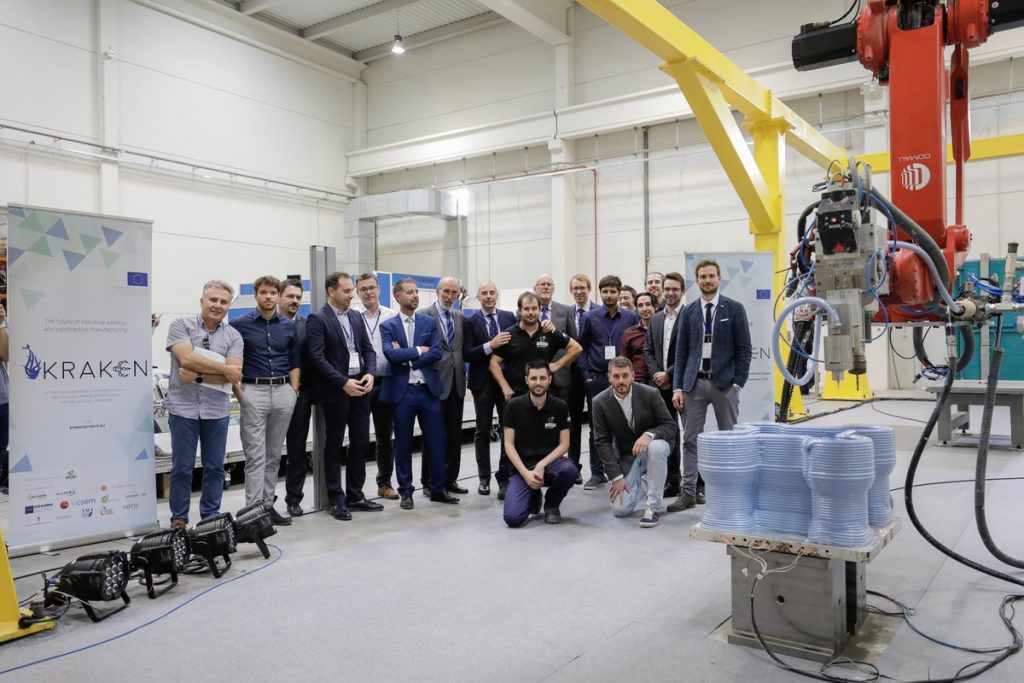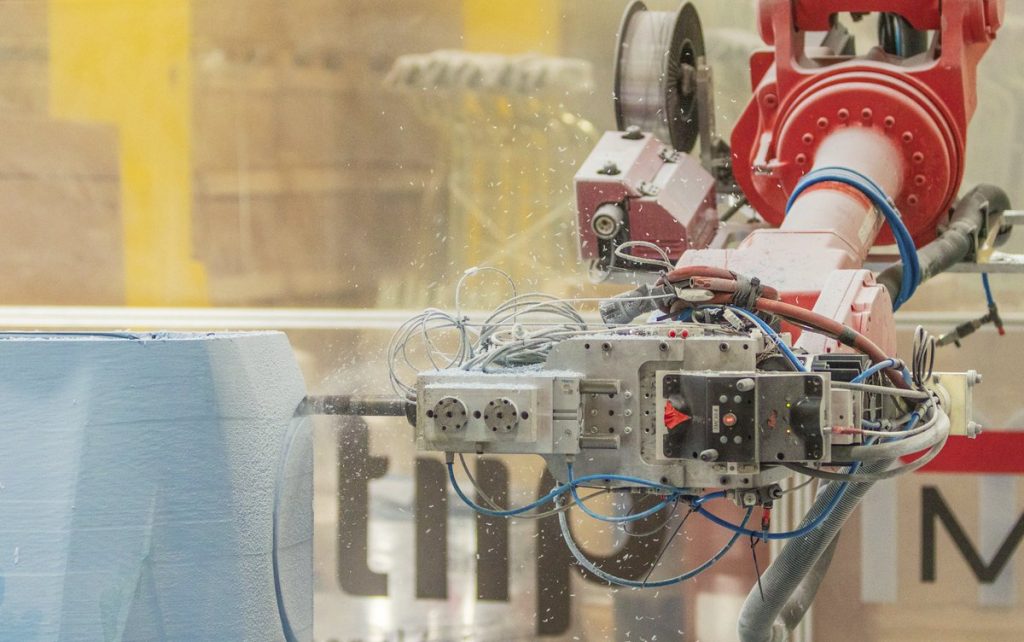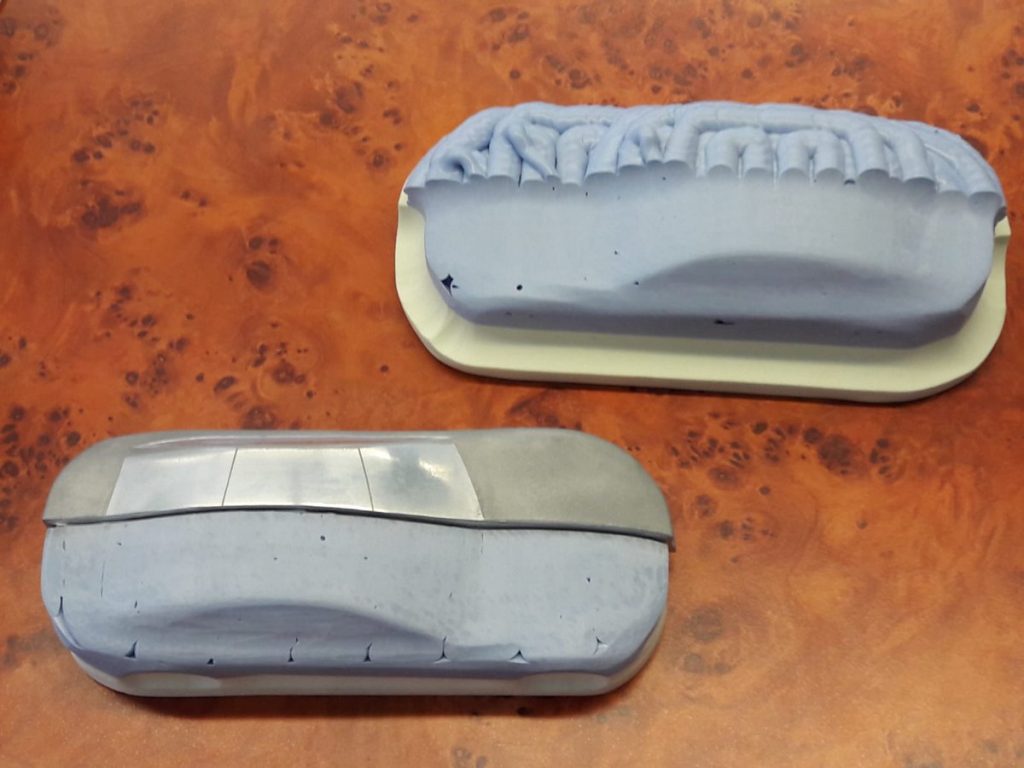For the past three years, a European collective has been working on the KRAKEN – a hybrid subtractive and additive manufacturing system. The machine is capable of creating objects up to 20 meters long, using three interchangeable 3D printing technologies and a fourth subtractive tool head. Completed at the end of September 2019, the KRAKEN has now been released to the commercial market.
“The machine is ready for the market, it has been tested in real manufacturing environment and project demonstrators have been validated by [collaborators] in real conditions,” announced José Antonio Dieste, researcher and KRAKEN Project coordinator at Spain’s AITIIP Technology Center.
“We can now deliver pieces or install Kraken cells according to client demands.”
New levels in hybrid manufacturing
Active since 2013, the KRAKEN Project was made possible by funding from the European Union’s Horizon 2020 program. Across eight countries in Europe, the project brings together the expertise of fifteen industry specialists and research institutes, including UK engineering consultancy firm TWI, Spanish civil infrastructure sustainability champion ACCIONA, Centro Ricerche FIAT (CRF) in Italy, and CECIMO, the European Association of the Machine Tool Industries.
The goal of the project was to create a machine capable of producing 20-meter-long parts made from aluminum, thermoset polymer materials, and a combination of the two. In the implementation of the machine following the project’s success, the collaborative also aims to create 150 new jobs within partner companies, and 600 more in the EU.

Additive and subtractive manufacturing in the KRAKEN
Now at completion, the KRAKEN system has interchangeable tool heads for resin extrusion, wire arc additive manufacturing (WAAM), arc spray metallisation, and cutting/milling.
Resin extrusion on the KRAKEN is a dedicated process for depositing a polyurethane (PU) paste. The PU paste used in the process has been developed by the KRAKEN collaborative and, with it, the system is capable of reaching a deposition rate of 120 kg/h. KRAKEN’s WAAM head, on the other hand, is tuned to 3D print aluminum at a rate of up to 15kg/h. Arc spray metallization is integrated for the addition of metal coating or net shapes on top of a polymer part, and the final, subtractive head of the KRAKEN targets 2mm cut depths at a speed of 10m/min.
As a four-in-one production machine, the KRAKEN effectively decreases the amount of floor space that would usually be required for machines possessing each of these technologies. It is designed for installation on the ceiling of a facility, and presently works across a 20m x 8m x 6m footprint.

Validated with automotive and construction designs
KRAKEN production is supported by a modified Computer Aided Manufacturing (CAM) program. Using EDGECAM software as a base, the KRAKEN team added new algorithms for hybrid manufacturing, including planar horizontal layer additive strategies and direct 3D freeform approaches. In-process monitoring, quality inspection and auto-calibration is enabled by a stereoscopic scanner and camera system with closed-loop control. To help diminish knowledge barriers to the adoption for hybrid manufacturing and the KRAKEN machine, the consortium has also created a comprehensive, free-to-use e-Learning platform.
Validation of the KRAKEN has been completed through a number of case studies conducted for select partners within the consortium. CRF in particular produced metal frames for the front and back of an Alfa Romeo 4C on the system. “Within KRAKEN,” the project brochure states, “CRF demonstrated the good performances of both polymeric and metallic materials that are suitable for automotive applications even for large area components.” In another example application, ACCIONA created lining panels for tunnels with integrated electrical wiring and metal profiles. Clearly seeing the potential of additive in construction, ACCIONA has also collaborated in the past with the Institute for Advanced Architecture of Catalonia (IAAC) to create a 3D printed bridge.

To stay up to date with all the latest AM activities subscribe to the 3D Printing Industry newsletter, follow us on Twitter, and like us on Facebook. Find and advertise new jobs in 3D printing here.
Featured image shows a 20 meter long part produced by the KRAKEN. Photo via KRAKEN Project



